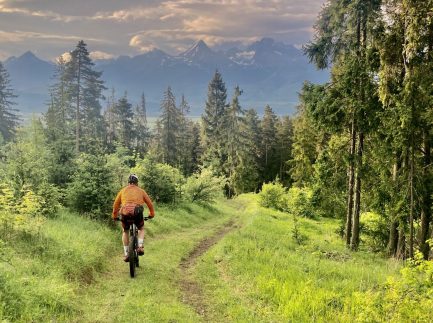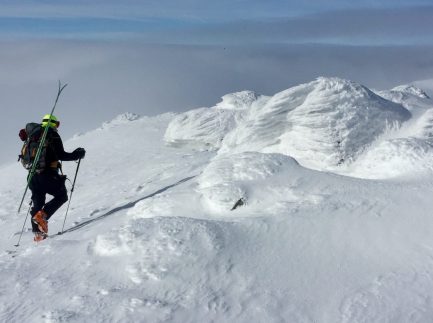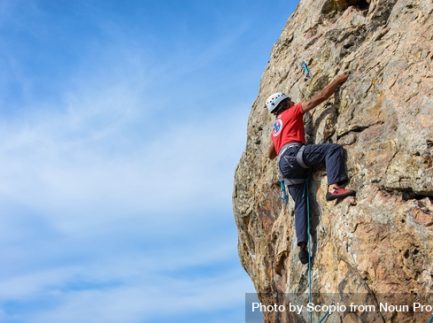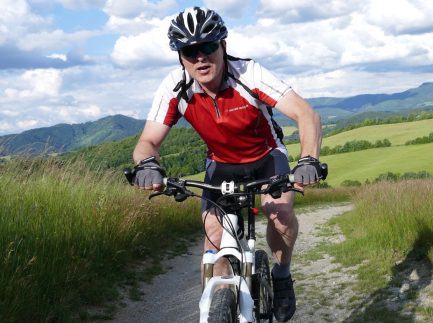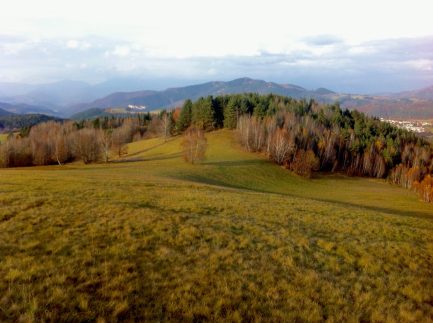REGION
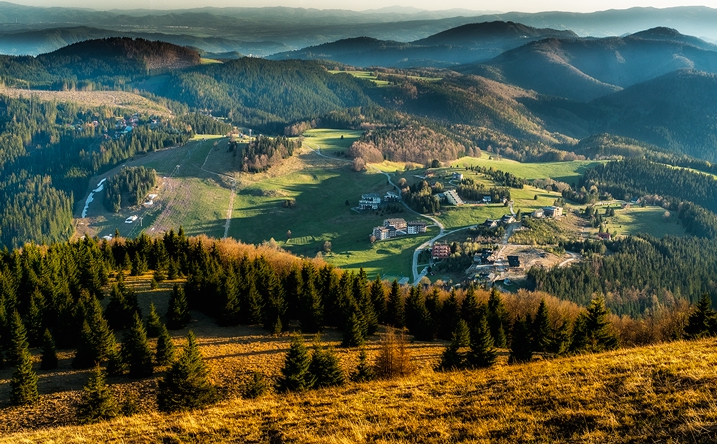
Although the center of our activities is primarily around Banská Bystrica, we know the whole of Slovakia perfectly and we do not shy away from accompanying people around the world.
Geography
Banská Bystrica is an ancient town with a rich mining history. It lies in a basin surrounded on all sides by mountains and national parks. It is close to everywhere. The geographical centre of Slovakia lies 15 km to the east and the centre of Europe 15 km to the west. Kremnické vrchy, Veľká Fatra, Nízke Tatry or Poľana, each of the mountain ranges has its own distinctive character. The rugged relief and variety of scenery make the whole area extremely attractive for mountain biking.
The peaks of the mountain ranges reaching up to 2,000 m above sea level are mainly meadow-like. The lower areas are richly wooded with many streams and clearings. The landscape is interspersed with a dense network of well-traveled dirt and forest roads and paths. Connoisseurs will enjoy the frequent natural singletrack trails. The trails have a distinctive elevation profile. Up, down, up, down. We don’t ride flat.
tourism
Tourism is well developed throughout the area. The region was part of Upper Hungary in the Middle Ages. The local gold, silver and copper mines were among the richest in Europe. This tradition is still present in many towns and villages today. Banská Bystrica, Kremnica, Banská Štiavnica (a UNESCO World Heritage Site) or Špania dolina are the top locations where history literally breathes on you. If you want to relax after a hard ride, you can do so in several thermal baths or well-known spa resorts.
Nature lovers will also find something to their liking. In the surrounding mountains, you’ll find a wealth of well-marked hiking trails. An interesting attraction is the 3 km long Harmanecká cave with rich stalactite decorations or rafting down the Hron River. There are some of the best Slovak areas with well-maintained paths for rock climbing.
There are many smaller and two large ski resorts in the region, which are equipped with facilities and services of Alpine standard. In 2016, Jasná was the venue for the women’s World Cup downhill races. There are excellent conditions for ski mountaineering and freeride skiing. The local athletics and downhill and cross-country skiing are at a high level. Players from Banská Bystrica are making music in the American hockey NHL.
ACCOMMODATION, GASTRO, BARS
There is enough accommodation capacity. From luxury hotels to ordinary guesthouses to simple cottages or private apartments. If you don’t want luxury, you can easily find very decent accommodation for 10 – 15 euros/person/night. Google won’t let you down.
For a delicious lunch you can pay from 4 euros (simple menu) to 7 euros in a better restaurant. There are excellent beers of various brands on tap everywhere, you’ll pay 1 – 1,5 euros for half a liter. Coffee 1 -1,5 euros, half a deciliter also around 1,5 euros. Of course, on our trails you’ll be drinking mainly in the backwater pubs of small mountain villages, and there the prices are half the price.
Banská Bystrica is a university town and therefore full of young people. By the way, Slovakia is world-famous for beautiful women. The centre of nightlife is on the main square, full of restaurants, cafes, bars and dance-clubs. The real disco “Ministry of fun” can be found in the Europe shopping centre.
history
The history of the city began to be written in the 13th century. From the originally Slovak settlement of Bystrice – thanks to several families of Saxon colonists, who naturally created an economic-administrative and artisan base for mining production in this area, the importance of the settlement rose to such an extent that King Belo IV. in 1255 he promoted it to a city.
The town of Banská Bystrica (Bystrice, Biztriche, Byzthercebana, Bystricia, Neusohl, Novo Solio, Neosolium, Beszterczebánya, etc.) is a very old settlement located on the “Via magna” road from Hungary to Poland, which served as a starting point for copper mining. gold and iron. These metals were mined sometime around the beginning of our era in the vicinity of the city, and gold is certainly also found in its current parts. Originally, the Slovak settlement became more important after the arrival of miners from German-speaking countries, mainly after the Mongol (Tatar) invasion in 1242, when their king Béla IV. invited to the plundered land. The expansion of the settlement was apparently very fast, because already in 1255 it was granted the rights of a free royal city. City rights were originally granted only to Saxon guests, but the Slovak population later won a decision-making position as well, so after a year a German magistrate alternated with a Slovak one. The development of the city was mainly connected with the mining of copper ores in the area between Starý Hory (Altenberg) and Spania Dolina (Herrengrund). Although copper was mined here probably already in prehistoric times, it gained industrial importance only in the second half of the 13th century. In the 14th century copper was already demonstrably exported to Venice. Through several European ports, Bystrica copper was exported to China, America, Africa and the Middle East. Spectral analyzes proved that most of the bronze products produced at that time in southern Nigeria contained copper from Banská Bystrica and its surroundings.
Our proven cycling tours
The routes we included in our selection were chosen by bikers for bikers.

